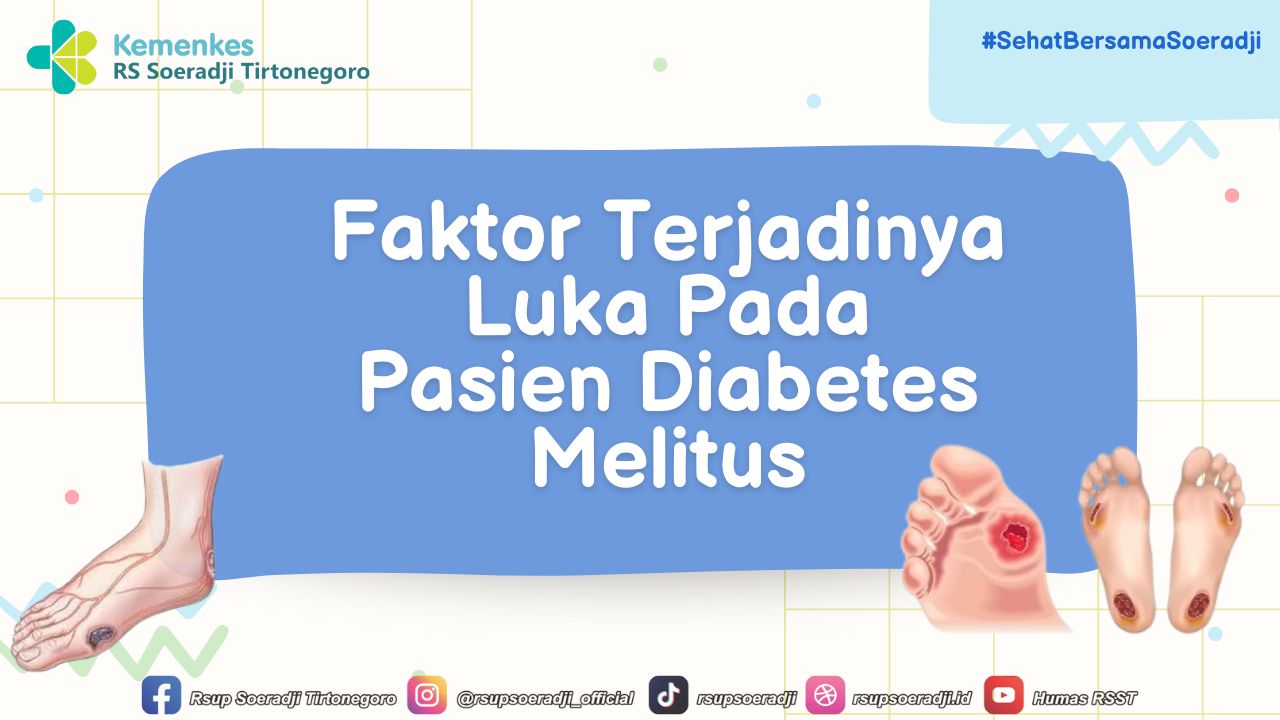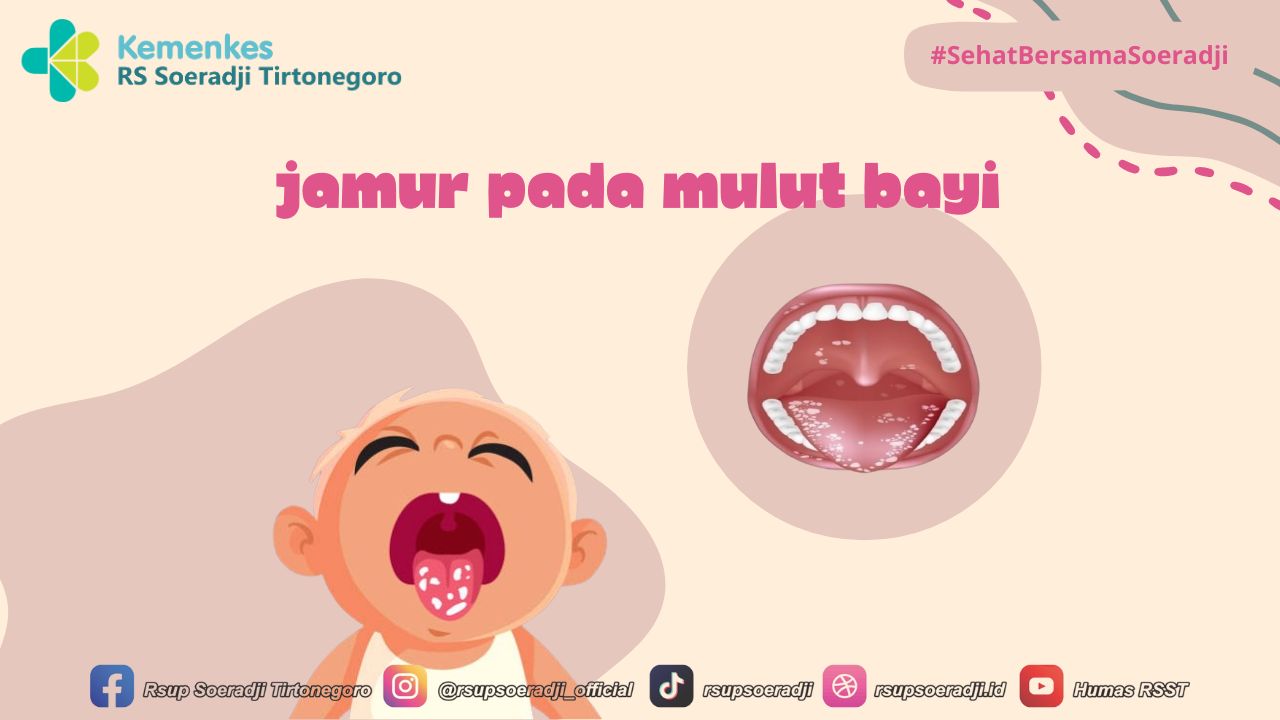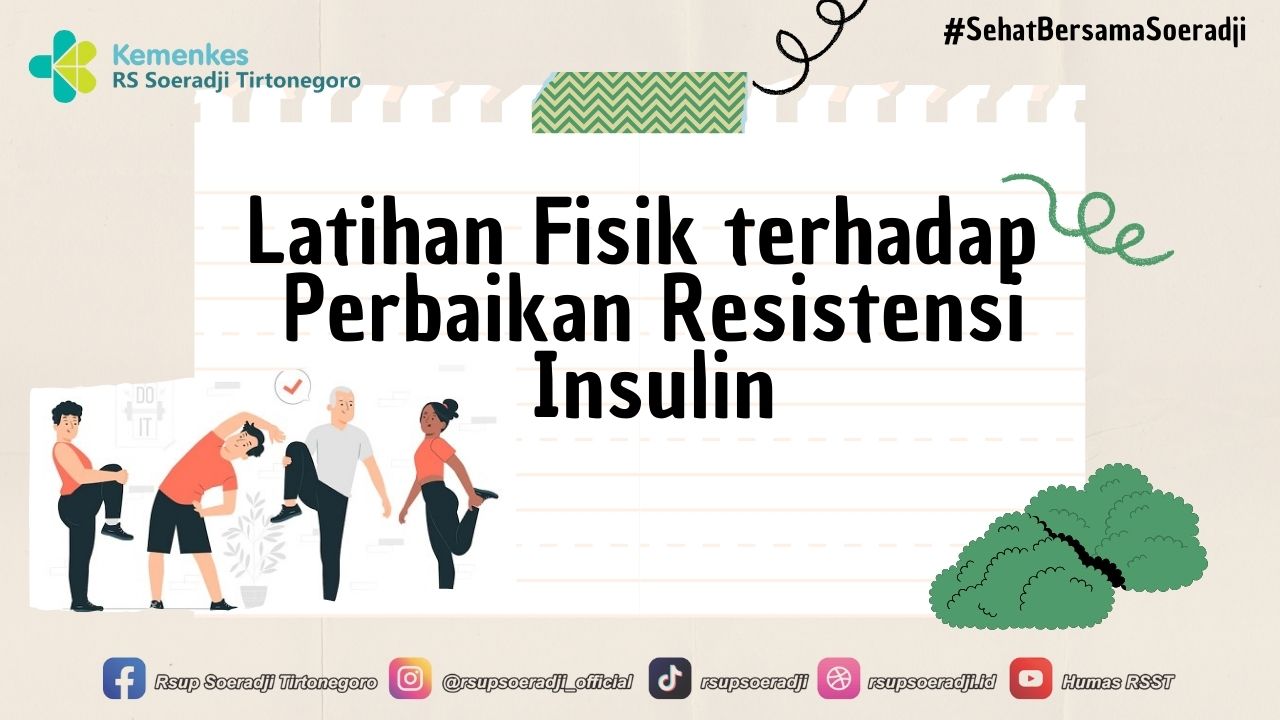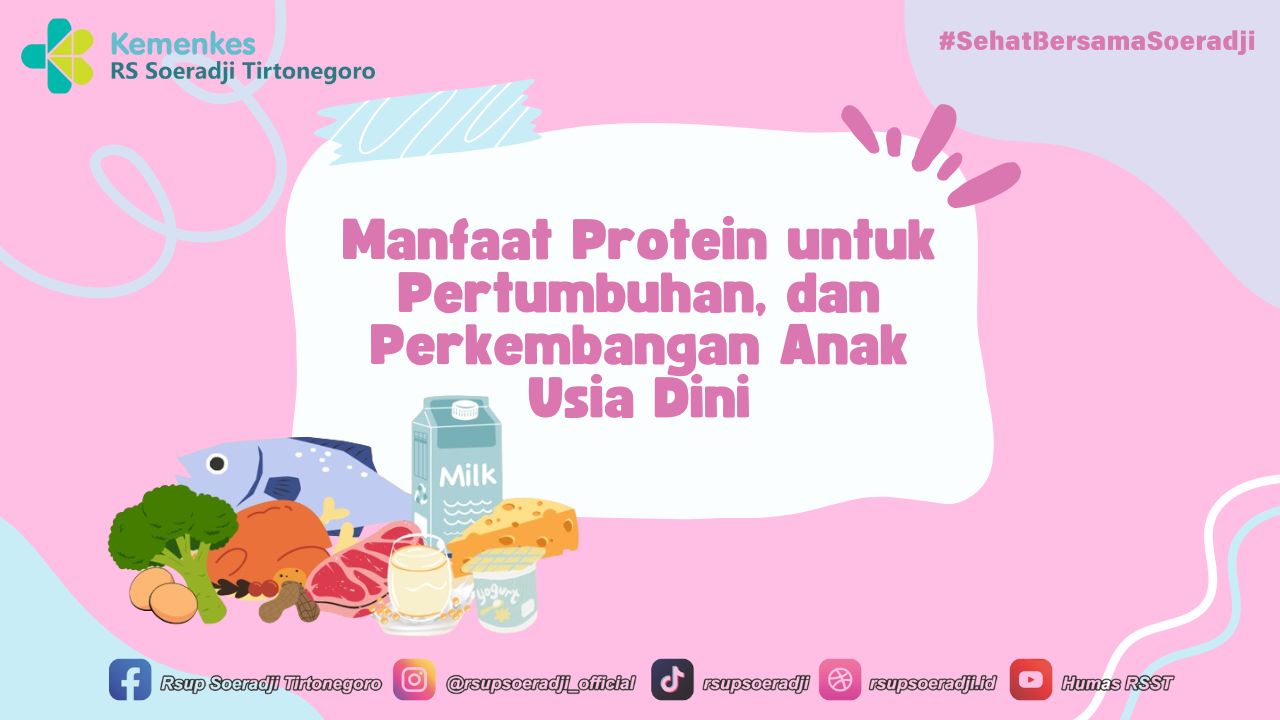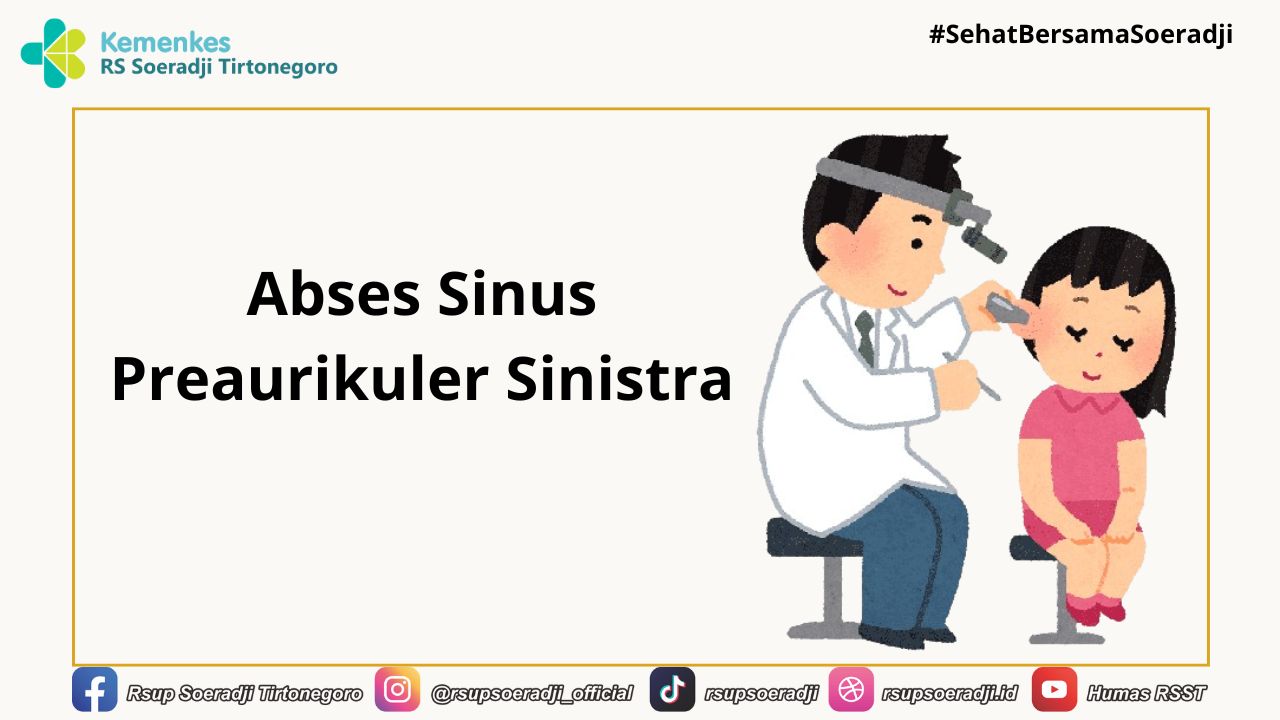Sindrom Patah Hati

Patah hati merupakan pengalaman yang tidak mengenakkan bagi setiap orang. Mungkin hampir setiap orang pernah merasakan patah hati. Kejadian seperti ditinggal wafat oleh orang yang dikasihi merupakan satu hal yang membuat patah hati. Tapi, tahukah anda bahwa ada penyakit yang dinamakan Sindrom Patah Hati (Broken Heart Syndrome)?
Sindrom Patah Hati merupakan suatu kondisi yang dicetuskan oleh situasi stres dan emosi yang hebat yang dapat ditandai oleh nyeri dada tiba-tiba <!--[if supportFields]> ADDIN ZOTERO_ITEM CSL_CITATION {"citationID":"YohuS7g4","properties":{"formattedCitation":"(1)","plainCitation":"(1)","noteIndex":0},"citationItems":[{"id":284,"uris":["https://zotero.org/users/local/AOY6ZtVT/items/PTWMMY68"],"itemData":{"id":284,"type":"webpage","abstract":"Learn more about this temporary heart muscle condition that can mimic a heart attack. It may be triggered by stressful events, such as a loved one's death.","container-title":"Mayo Clinic","language":"en","title":"Broken heart syndrome - Symptoms and causes","URL":"https://www.mayoclinic.org/diseases-conditions/broken-heart-syndrome/symptoms-causes/syc-20354617","accessed":{"date-parts":[["2022",11,14]]}}}],"schema":"https://github.com/citation-style-language/schema/raw/master/csl-citation.json"} <![endif]-->(1)<!--[if supportFields]><![endif]-->. Hal ini sering diasumsikan sebagai serangan jantung <!--[if supportFields]> ADDIN ZOTERO_ITEM CSL_CITATION {"citationID":"lw1wPp0k","properties":{"formattedCitation":"(1)","plainCitation":"(1)","noteIndex":0},"citationItems":[{"id":284,"uris":["https://zotero.org/users/local/AOY6ZtVT/items/PTWMMY68"],"itemData":{"id":284,"type":"webpage","abstract":"Learn more about this temporary heart muscle condition that can mimic a heart attack. It may be triggered by stressful events, such as a loved one's death.","container-title":"Mayo Clinic","language":"en","title":"Broken heart syndrome - Symptoms and causes","URL":"https://www.mayoclinic.org/diseases-conditions/broken-heart-syndrome/symptoms-causes/syc-20354617","accessed":{"date-parts":[["2022",11,14]]}}}],"schema":"https://github.com/citation-style-language/schema/raw/master/csl-citation.json"} <![endif]-->(1)<!--[if supportFields]><![endif]-->. Nama lain Sindrom Patah Hati adalah Stress Cardiomyopathy, Takotsubo Cardiomyopathy, dan Apical Ballooning Syndrome<!--[if supportFields]> ADDIN ZOTERO_ITEM CSL_CITATION {"citationID":"iDnA32px","properties":{"formattedCitation":"(1,2)","plainCitation":"(1,2)","noteIndex":0},"citationItems":[{"id":284,"uris":["https://zotero.org/users/local/AOY6ZtVT/items/PTWMMY68"],"itemData":{"id":284,"type":"webpage","abstract":"Learn more about this temporary heart muscle condition that can mimic a heart attack. It may be triggered by stressful events, such as a loved one's death.","container-title":"Mayo Clinic","language":"en","title":"Broken heart syndrome - Symptoms and causes","URL":"https://www.mayoclinic.org/diseases-conditions/broken-heart-syndrome/symptoms-causes/syc-20354617","accessed":{"date-parts":[["2022",11,14]]}}},{"id":288,"uris":["https://zotero.org/users/local/AOY6ZtVT/items/BC29SQ45"],"itemData":{"id":288,"type":"article-journal","abstract":"Recently, an increasing number of cases of stress cardiomyopathy, mainly occurring in elderly women, have been documented in many parts of the world. In Japan, this disease is known as takotsubo cardiomyopathy (named after the fishing pot used for trapping octopus). Symptoms of this condition are akin to those of acute myocardial infarction, but no obstructive lesions are found in the coronary arteries, and left ventricular apical ballooning is present. Stress cardiomyopathy is now a well-recognized cause of acute heart failure, lethal ventricular arrhythmias, and ventricular rupture. Although the precise mechanism of onset of this condition is still controversial, two major pathogenic mechanisms have been proposed: catecholamine cardiotoxicity and neurogenic stunned myocardium. We summarize the findings of studies conducted to date on stress cardiomyopathy—from bench to bedside and bedside to bench.","container-title":"Annual Review of Medicine","DOI":"10.1146/annurev.med.041908.191750","issue":"1","note":"_eprint: https://doi.org/10.1146/annurev.med.041908.191750\nPMID: 19686084","page":"271-286","source":"Annual Reviews","title":"Stress Cardiomyopathy","volume":"61","author":[{"family":"Akashi","given":"Yoshihiro J."},{"family":"Nef","given":"Holger M."},{"family":"Möllmann","given":"Helge"},{"family":"Ueyama","given":"Takashi"}],"issued":{"date-parts":[["2010"]]}}}],"schema":"https://github.com/citation-style-language/schema/raw/master/csl-citation.json"} <![endif]-->(1,2)<!--[if supportFields]><![endif]-->. Kejadian Sindrom Patah Hati lebih banyak pada perempuan daripada laki-laki<!--[if supportFields]> ADDIN ZOTERO_ITEM CSL_CITATION {"citationID":"5OVaUZjD","properties":{"formattedCitation":"(2,3)","plainCitation":"(2,3)","noteIndex":0},"citationItems":[{"id":288,"uris":["https://zotero.org/users/local/AOY6ZtVT/items/BC29SQ45"],"itemData":{"id":288,"type":"article-journal","abstract":"Recently, an increasing number of cases of stress cardiomyopathy, mainly occurring in elderly women, have been documented in many parts of the world. In Japan, this disease is known as takotsubo cardiomyopathy (named after the fishing pot used for trapping octopus). Symptoms of this condition are akin to those of acute myocardial infarction, but no obstructive lesions are found in the coronary arteries, and left ventricular apical ballooning is present. Stress cardiomyopathy is now a well-recognized cause of acute heart failure, lethal ventricular arrhythmias, and ventricular rupture. Although the precise mechanism of onset of this condition is still controversial, two major pathogenic mechanisms have been proposed: catecholamine cardiotoxicity and neurogenic stunned myocardium. We summarize the findings of studies conducted to date on stress cardiomyopathy—from bench to bedside and bedside to bench.","container-title":"Annual Review of Medicine","DOI":"10.1146/annurev.med.041908.191750","issue":"1","note":"_eprint: https://doi.org/10.1146/annurev.med.041908.191750\nPMID: 19686084","page":"271-286","source":"Annual Reviews","title":"Stress Cardiomyopathy","volume":"61","author":[{"family":"Akashi","given":"Yoshihiro J."},{"family":"Nef","given":"Holger M."},{"family":"Möllmann","given":"Helge"},{"family":"Ueyama","given":"Takashi"}],"issued":{"date-parts":[["2010"]]}}},{"id":286,"uris":["https://zotero.org/users/local/AOY6ZtVT/items/YSMA5HE3"],"itemData":{"id":286,"type":"article-journal","abstract":"Originally described by Japanese authors in the 1990s, Takotsubo syndrome (TTS) generally presents as an acute myocardial infarction characterized by severe left ventricular dysfunction. TTS, however, differs from an acute coronary syndrome because patients have generally a normal coronary angiogram and left ventricular dysfunction, which extends beyond the territory subtended by a single coronary artery and recovers within days or weeks. The prognosis was initially thought to be benign, but subsequent studies have demonstrated that both short-term mortality and long-term mortality are higher than previously recognized. Indeed, mortality reported during the acute phase in hospitalized patients is ?4% to 5%, a figure comparable to that of ST-segment–elevation myocardial infarction in the era of primary percutaneous coronary interventions. Despite extensive research, the cause and pathogenesis of TTS remain incompletely understood. The aim of the present review is to discuss the pathophysiology of TTS with particular emphasis on the role of the central and autonomic nervous systems. Different emotional or psychological stressors have been identified to precede the onset of TTS. The anatomic structures that mediate the stress response are found in both the central and autonomic nervous systems. Acute stressors induce brain activation, increasing bioavailability of cortisol and catecholamine. Both circulating epinephrine and norepinephrine released from adrenal medullary chromaffin cells and norepinephrine released locally from sympathetic nerve terminals are significantly increased in the acute phase of TTS. This catecholamine surge leads, through multiple mechanisms, that is, direct catecholamine toxicity, adrenoceptor-mediated damage, epicardial and microvascular coronary vasoconstriction and/or spasm, and increased cardiac workload, to myocardial damage, which has a functional counterpart of transient apical left ventricular ballooning. The relative preponderance among postmenopausal women suggests that estrogen deprivation may play a facilitating role, probably mediated by endothelial dysfunction. Despite the substantial improvement in our understanding of the pathophysiology of TTS, a number of knowledge gaps remain.","container-title":"Circulation","DOI":"10.1161/CIRCULATIONAHA.116.027121","issue":"24","note":"publisher: American Heart Association","page":"2426-2441","source":"ahajournals.org (Atypon)","title":"Pathophysiology of Takotsubo Syndrome","volume":"135","author":[{"family":"Pelliccia","given":"Francesco"},{"family":"Kaski","given":"Juan Carlos"},{"family":"Crea","given":"Filippo"},{"family":"Camici","given":"Paolo G."}],"issued":{"date-parts":[["2017",6,13]]}}}],"schema":"https://github.com/citation-style-language/schema/raw/master/csl-citation.json"} <![endif]-->(2,3)<!--[if supportFields]><![endif]-->. Lantas, apakah yang terjadi pada Sindrom Patah Hati ini?
Penyebab pasti dari sindrom ini masih belum jelas, namun diperkirakan karena pengingkatan hormon stres yang meningkat tinggi secara tiba-tiba sehingga mengakibatkan efek toksik yang menurunkan fungsi otot jantung<!--[if supportFields]> ADDIN ZOTERO_ITEM CSL_CITATION {"citationID":"OTYidUOH","properties":{"formattedCitation":"(3)","plainCitation":"(3)","noteIndex":0},"citationItems":[{"id":286,"uris":["https://zotero.org/users/local/AOY6ZtVT/items/YSMA5HE3"],"itemData":{"id":286,"type":"article-journal","abstract":"Originally described by Japanese authors in the 1990s, Takotsubo syndrome (TTS) generally presents as an acute myocardial infarction characterized by severe left ventricular dysfunction. TTS, however, differs from an acute coronary syndrome because patients have generally a normal coronary angiogram and left ventricular dysfunction, which extends beyond the territory subtended by a single coronary artery and recovers within days or weeks. The prognosis was initially thought to be benign, but subsequent studies have demonstrated that both short-term mortality and long-term mortality are higher than previously recognized. Indeed, mortality reported during the acute phase in hospitalized patients is ?4% to 5%, a figure comparable to that of ST-segment–elevation myocardial infarction in the era of primary percutaneous coronary interventions. Despite extensive research, the cause and pathogenesis of TTS remain incompletely understood. The aim of the present review is to discuss the pathophysiology of TTS with particular emphasis on the role of the central and autonomic nervous systems. Different emotional or psychological stressors have been identified to precede the onset of TTS. The anatomic structures that mediate the stress response are found in both the central and autonomic nervous systems. Acute stressors induce brain activation, increasing bioavailability of cortisol and catecholamine. Both circulating epinephrine and norepinephrine released from adrenal medullary chromaffin cells and norepinephrine released locally from sympathetic nerve terminals are significantly increased in the acute phase of TTS. This catecholamine surge leads, through multiple mechanisms, that is, direct catecholamine toxicity, adrenoceptor-mediated damage, epicardial and microvascular coronary vasoconstriction and/or spasm, and increased cardiac workload, to myocardial damage, which has a functional counterpart of transient apical left ventricular ballooning. The relative preponderance among postmenopausal women suggests that estrogen deprivation may play a facilitating role, probably mediated by endothelial dysfunction. Despite the substantial improvement in our understanding of the pathophysiology of TTS, a number of knowledge gaps remain.","container-title":"Circulation","DOI":"10.1161/CIRCULATIONAHA.116.027121","issue":"24","note":"publisher: American Heart Association","page":"2426-2441","source":"ahajournals.org (Atypon)","title":"Pathophysiology of Takotsubo Syndrome","volume":"135","author":[{"family":"Pelliccia","given":"Francesco"},{"family":"Kaski","given":"Juan Carlos"},{"family":"Crea","given":"Filippo"},{"family":"Camici","given":"Paolo G."}],"issued":{"date-parts":[["2017",6,13]]}}}],"schema":"https://github.com/citation-style-language/schema/raw/master/csl-citation.json"} <![endif]-->(3)<!--[if supportFields]><![endif]-->. Selain itu, pembuluh arteri menyempit yang mengakibatkan peningkatan tekanan darah sehingga memperberat kerja jantung<!--[if supportFields]> ADDIN ZOTERO_ITEM CSL_CITATION {"citationID":"YGDR1Mka","properties":{"formattedCitation":"(3)","plainCitation":"(3)","noteIndex":0},"citationItems":[{"id":286,"uris":["https://zotero.org/users/local/AOY6ZtVT/items/YSMA5HE3"],"itemData":{"id":286,"type":"article-journal","abstract":"Originally described by Japanese authors in the 1990s, Takotsubo syndrome (TTS) generally presents as an acute myocardial infarction characterized by severe left ventricular dysfunction. TTS, however, differs from an acute coronary syndrome because patients have generally a normal coronary angiogram and left ventricular dysfunction, which extends beyond the territory subtended by a single coronary artery and recovers within days or weeks. The prognosis was initially thought to be benign, but subsequent studies have demonstrated that both short-term mortality and long-term mortality are higher than previously recognized. Indeed, mortality reported during the acute phase in hospitalized patients is ?4% to 5%, a figure comparable to that of ST-segment–elevation myocardial infarction in the era of primary percutaneous coronary interventions. Despite extensive research, the cause and pathogenesis of TTS remain incompletely understood. The aim of the present review is to discuss the pathophysiology of TTS with particular emphasis on the role of the central and autonomic nervous systems. Different emotional or psychological stressors have been identified to precede the onset of TTS. The anatomic structures that mediate the stress response are found in both the central and autonomic nervous systems. Acute stressors induce brain activation, increasing bioavailability of cortisol and catecholamine. Both circulating epinephrine and norepinephrine released from adrenal medullary chromaffin cells and norepinephrine released locally from sympathetic nerve terminals are significantly increased in the acute phase of TTS. This catecholamine surge leads, through multiple mechanisms, that is, direct catecholamine toxicity, adrenoceptor-mediated damage, epicardial and microvascular coronary vasoconstriction and/or spasm, and increased cardiac workload, to myocardial damage, which has a functional counterpart of transient apical left ventricular ballooning. The relative preponderance among postmenopausal women suggests that estrogen deprivation may play a facilitating role, probably mediated by endothelial dysfunction. Despite the substantial improvement in our understanding of the pathophysiology of TTS, a number of knowledge gaps remain.","container-title":"Circulation","DOI":"10.1161/CIRCULATIONAHA.116.027121","issue":"24","note":"publisher: American Heart Association","page":"2426-2441","source":"ahajournals.org (Atypon)","title":"Pathophysiology of Takotsubo Syndrome","volume":"135","author":[{"family":"Pelliccia","given":"Francesco"},{"family":"Kaski","given":"Juan Carlos"},{"family":"Crea","given":"Filippo"},{"family":"Camici","given":"Paolo G."}],"issued":{"date-parts":[["2017",6,13]]}}}],"schema":"https://github.com/citation-style-language/schema/raw/master/csl-citation.json"} <![endif]-->(3)<!--[if supportFields]><![endif]-->. Pembuluh arteri koroner juga menyempit atau spasme yang akan menurunkan aliran darah ke otot jantung<!--[if supportFields]> ADDIN ZOTERO_ITEM CSL_CITATION {"citationID":"oq81O3iJ","properties":{"formattedCitation":"(3)","plainCitation":"(3)","noteIndex":0},"citationItems":[{"id":286,"uris":["https://zotero.org/users/local/AOY6ZtVT/items/YSMA5HE3"],"itemData":{"id":286,"type":"article-journal","abstract":"Originally described by Japanese authors in the 1990s, Takotsubo syndrome (TTS) generally presents as an acute myocardial infarction characterized by severe left ventricular dysfunction. TTS, however, differs from an acute coronary syndrome because patients have generally a normal coronary angiogram and left ventricular dysfunction, which extends beyond the territory subtended by a single coronary artery and recovers within days or weeks. The prognosis was initially thought to be benign, but subsequent studies have demonstrated that both short-term mortality and long-term mortality are higher than previously recognized. Indeed, mortality reported during the acute phase in hospitalized patients is ?4% to 5%, a figure comparable to that of ST-segment–elevation myocardial infarction in the era of primary percutaneous coronary interventions. Despite extensive research, the cause and pathogenesis of TTS remain incompletely understood. The aim of the present review is to discuss the pathophysiology of TTS with particular emphasis on the role of the central and autonomic nervous systems. Different emotional or psychological stressors have been identified to precede the onset of TTS. The anatomic structures that mediate the stress response are found in both the central and autonomic nervous systems. Acute stressors induce brain activation, increasing bioavailability of cortisol and catecholamine. Both circulating epinephrine and norepinephrine released from adrenal medullary chromaffin cells and norepinephrine released locally from sympathetic nerve terminals are significantly increased in the acute phase of TTS. This catecholamine surge leads, through multiple mechanisms, that is, direct catecholamine toxicity, adrenoceptor-mediated damage, epicardial and microvascular coronary vasoconstriction and/or spasm, and increased cardiac workload, to myocardial damage, which has a functional counterpart of transient apical left ventricular ballooning. The relative preponderance among postmenopausal women suggests that estrogen deprivation may play a facilitating role, probably mediated by endothelial dysfunction. Despite the substantial improvement in our understanding of the pathophysiology of TTS, a number of knowledge gaps remain.","container-title":"Circulation","DOI":"10.1161/CIRCULATIONAHA.116.027121","issue":"24","note":"publisher: American Heart Association","page":"2426-2441","source":"ahajournals.org (Atypon)","title":"Pathophysiology of Takotsubo Syndrome","volume":"135","author":[{"family":"Pelliccia","given":"Francesco"},{"family":"Kaski","given":"Juan Carlos"},{"family":"Crea","given":"Filippo"},{"family":"Camici","given":"Paolo G."}],"issued":{"date-parts":[["2017",6,13]]}}}],"schema":"https://github.com/citation-style-language/schema/raw/master/csl-citation.json"} <![endif]-->(3)<!--[if supportFields]><![endif]-->. Dampak dari kejadian-kejadian ini adalah nyeri dada dengan atau tanpa sesak dan perubahan gambaran elektrik jantung (elektrokardiogram) yang mirip serangan jantung<!--[if supportFields]> ADDIN ZOTERO_ITEM CSL_CITATION {"citationID":"xJzy97QE","properties":{"formattedCitation":"(2,3)","plainCitation":"(2,3)","noteIndex":0},"citationItems":[{"id":288,"uris":["https://zotero.org/users/local/AOY6ZtVT/items/BC29SQ45"],"itemData":{"id":288,"type":"article-journal","abstract":"Recently, an increasing number of cases of stress cardiomyopathy, mainly occurring in elderly women, have been documented in many parts of the world. In Japan, this disease is known as takotsubo cardiomyopathy (named after the fishing pot used for trapping octopus). Symptoms of this condition are akin to those of acute myocardial infarction, but no obstructive lesions are found in the coronary arteries, and left ventricular apical ballooning is present. Stress cardiomyopathy is now a well-recognized cause of acute heart failure, lethal ventricular arrhythmias, and ventricular rupture. Although the precise mechanism of onset of this condition is still controversial, two major pathogenic mechanisms have been proposed: catecholamine cardiotoxicity and neurogenic stunned myocardium. We summarize the findings of studies conducted to date on stress cardiomyopathy—from bench to bedside and bedside to bench.","container-title":"Annual Review of Medicine","DOI":"10.1146/annurev.med.041908.191750","issue":"1","note":"_eprint: https://doi.org/10.1146/annurev.med.041908.191750\nPMID: 19686084","page":"271-286","source":"Annual Reviews","title":"Stress Cardiomyopathy","volume":"61","author":[{"family":"Akashi","given":"Yoshihiro J."},{"family":"Nef","given":"Holger M."},{"family":"Möllmann","given":"Helge"},{"family":"Ueyama","given":"Takashi"}],"issued":{"date-parts":[["2010"]]}}},{"id":286,"uris":["https://zotero.org/users/local/AOY6ZtVT/items/YSMA5HE3"],"itemData":{"id":286,"type":"article-journal","abstract":"Originally described by Japanese authors in the 1990s, Takotsubo syndrome (TTS) generally presents as an acute myocardial infarction characterized by severe left ventricular dysfunction. TTS, however, differs from an acute coronary syndrome because patients have generally a normal coronary angiogram and left ventricular dysfunction, which extends beyond the territory subtended by a single coronary artery and recovers within days or weeks. The prognosis was initially thought to be benign, but subsequent studies have demonstrated that both short-term mortality and long-term mortality are higher than previously recognized. Indeed, mortality reported during the acute phase in hospitalized patients is ?4% to 5%, a figure comparable to that of ST-segment–elevation myocardial infarction in the era of primary percutaneous coronary interventions. Despite extensive research, the cause and pathogenesis of TTS remain incompletely understood. The aim of the present review is to discuss the pathophysiology of TTS with particular emphasis on the role of the central and autonomic nervous systems. Different emotional or psychological stressors have been identified to precede the onset of TTS. The anatomic structures that mediate the stress response are found in both the central and autonomic nervous systems. Acute stressors induce brain activation, increasing bioavailability of cortisol and catecholamine. Both circulating epinephrine and norepinephrine released from adrenal medullary chromaffin cells and norepinephrine released locally from sympathetic nerve terminals are significantly increased in the acute phase of TTS. This catecholamine surge leads, through multiple mechanisms, that is, direct catecholamine toxicity, adrenoceptor-mediated damage, epicardial and microvascular coronary vasoconstriction and/or spasm, and increased cardiac workload, to myocardial damage, which has a functional counterpart of transient apical left ventricular ballooning. The relative preponderance among postmenopausal women suggests that estrogen deprivation may play a facilitating role, probably mediated by endothelial dysfunction. Despite the substantial improvement in our understanding of the pathophysiology of TTS, a number of knowledge gaps remain.","container-title":"Circulation","DOI":"10.1161/CIRCULATIONAHA.116.027121","issue":"24","note":"publisher: American Heart Association","page":"2426-2441","source":"ahajournals.org (Atypon)","title":"Pathophysiology of Takotsubo Syndrome","volume":"135","author":[{"family":"Pelliccia","given":"Francesco"},{"family":"Kaski","given":"Juan Carlos"},{"family":"Crea","given":"Filippo"},{"family":"Camici","given":"Paolo G."}],"issued":{"date-parts":[["2017",6,13]]}}}],"schema":"https://github.com/citation-style-language/schema/raw/master/csl-citation.json"} <![endif]-->(2,3)<!--[if supportFields]><![endif]-->.
Kasus yang berat dapat menyebabkan gangguan irama jantung dan ruptur otot jantung<!--[if supportFields]> ADDIN ZOTERO_ITEM CSL_CITATION {"citationID":"dcCbH9fb","properties":{"formattedCitation":"(3)","plainCitation":"(3)","noteIndex":0},"citationItems":[{"id":286,"uris":["https://zotero.org/users/local/AOY6ZtVT/items/YSMA5HE3"],"itemData":{"id":286,"type":"article-journal","abstract":"Originally described by Japanese authors in the 1990s, Takotsubo syndrome (TTS) generally presents as an acute myocardial infarction characterized by severe left ventricular dysfunction. TTS, however, differs from an acute coronary syndrome because patients have generally a normal coronary angiogram and left ventricular dysfunction, which extends beyond the territory subtended by a single coronary artery and recovers within days or weeks. The prognosis was initially thought to be benign, but subsequent studies have demonstrated that both short-term mortality and long-term mortality are higher than previously recognized. Indeed, mortality reported during the acute phase in hospitalized patients is ?4% to 5%, a figure comparable to that of ST-segment–elevation myocardial infarction in the era of primary percutaneous coronary interventions. Despite extensive research, the cause and pathogenesis of TTS remain incompletely understood. The aim of the present review is to discuss the pathophysiology of TTS with particular emphasis on the role of the central and autonomic nervous systems. Different emotional or psychological stressors have been identified to precede the onset of TTS. The anatomic structures that mediate the stress response are found in both the central and autonomic nervous systems. Acute stressors induce brain activation, increasing bioavailability of cortisol and catecholamine. Both circulating epinephrine and norepinephrine released from adrenal medullary chromaffin cells and norepinephrine released locally from sympathetic nerve terminals are significantly increased in the acute phase of TTS. This catecholamine surge leads, through multiple mechanisms, that is, direct catecholamine toxicity, adrenoceptor-mediated damage, epicardial and microvascular coronary vasoconstriction and/or spasm, and increased cardiac workload, to myocardial damage, which has a functional counterpart of transient apical left ventricular ballooning. The relative preponderance among postmenopausal women suggests that estrogen deprivation may play a facilitating role, probably mediated by endothelial dysfunction. Despite the substantial improvement in our understanding of the pathophysiology of TTS, a number of knowledge gaps remain.","container-title":"Circulation","DOI":"10.1161/CIRCULATIONAHA.116.027121","issue":"24","note":"publisher: American Heart Association","page":"2426-2441","source":"ahajournals.org (Atypon)","title":"Pathophysiology of Takotsubo Syndrome","volume":"135","author":[{"family":"Pelliccia","given":"Francesco"},{"family":"Kaski","given":"Juan Carlos"},{"family":"Crea","given":"Filippo"},{"family":"Camici","given":"Paolo G."}],"issued":{"date-parts":[["2017",6,13]]}}}],"schema":"https://github.com/citation-style-language/schema/raw/master/csl-citation.json"} <![endif]-->(3)<!--[if supportFields]><![endif]-->. Namun, Sindrom patah hati biasanya bersifat sementara dan pengobatan bersifat suportif (contohnya kontrol tekanan darah dengan obat peningkat kontraksi jantung)<!--[if supportFields]> ADDIN ZOTERO_ITEM CSL_CITATION {"citationID":"2M6RZz9I","properties":{"formattedCitation":"(1\\uc0\\u8211{}3)","plainCitation":"(1–3)","noteIndex":0},"citationItems":[{"id":284,"uris":["https://zotero.org/users/local/AOY6ZtVT/items/PTWMMY68"],"itemData":{"id":284,"type":"webpage","abstract":"Learn more about this temporary heart muscle condition that can mimic a heart attack. It may be triggered by stressful events, such as a loved one's death.","container-title":"Mayo Clinic","language":"en","title":"Broken heart syndrome - Symptoms and causes","URL":"https://www.mayoclinic.org/diseases-conditions/broken-heart-syndrome/symptoms-causes/syc-20354617","accessed":{"date-parts":[["2022",11,14]]}}},{"id":288,"uris":["https://zotero.org/users/local/AOY6ZtVT/items/BC29SQ45"],"itemData":{"id":288,"type":"article-journal","abstract":"Recently, an increasing number of cases of stress cardiomyopathy, mainly occurring in elderly women, have been documented in many parts of the world. In Japan, this disease is known as takotsubo cardiomyopathy (named after the fishing pot used for trapping octopus). Symptoms of this condition are akin to those of acute myocardial infarction, but no obstructive lesions are found in the coronary arteries, and left ventricular apical ballooning is present. Stress cardiomyopathy is now a well-recognized cause of acute heart failure, lethal ventricular arrhythmias, and ventricular rupture. Although the precise mechanism of onset of this condition is still controversial, two major pathogenic mechanisms have been proposed: catecholamine cardiotoxicity and neurogenic stunned myocardium. We summarize the findings of studies conducted to date on stress cardiomyopathy—from bench to bedside and bedside to bench.","container-title":"Annual Review of Medicine","DOI":"10.1146/annurev.med.041908.191750","issue":"1","note":"_eprint: https://doi.org/10.1146/annurev.med.041908.191750\nPMID: 19686084","page":"271-286","source":"Annual Reviews","title":"Stress Cardiomyopathy","volume":"61","author":[{"family":"Akashi","given":"Yoshihiro J."},{"family":"Nef","given":"Holger M."},{"family":"Möllmann","given":"Helge"},{"family":"Ueyama","given":"Takashi"}],"issued":{"date-parts":[["2010"]]}}},{"id":286,"uris":["https://zotero.org/users/local/AOY6ZtVT/items/YSMA5HE3"],"itemData":{"id":286,"type":"article-journal","abstract":"Originally described by Japanese authors in the 1990s, Takotsubo syndrome (TTS) generally presents as an acute myocardial infarction characterized by severe left ventricular dysfunction. TTS, however, differs from an acute coronary syndrome because patients have generally a normal coronary angiogram and left ventricular dysfunction, which extends beyond the territory subtended by a single coronary artery and recovers within days or weeks. The prognosis was initially thought to be benign, but subsequent studies have demonstrated that both short-term mortality and long-term mortality are higher than previously recognized. Indeed, mortality reported during the acute phase in hospitalized patients is ?4% to 5%, a figure comparable to that of ST-segment–elevation myocardial infarction in the era of primary percutaneous coronary interventions. Despite extensive research, the cause and pathogenesis of TTS remain incompletely understood. The aim of the present review is to discuss the pathophysiology of TTS with particular emphasis on the role of the central and autonomic nervous systems. Different emotional or psychological stressors have been identified to precede the onset of TTS. The anatomic structures that mediate the stress response are found in both the central and autonomic nervous systems. Acute stressors induce brain activation, increasing bioavailability of cortisol and catecholamine. Both circulating epinephrine and norepinephrine released from adrenal medullary chromaffin cells and norepinephrine released locally from sympathetic nerve terminals are significantly increased in the acute phase of TTS. This catecholamine surge leads, through multiple mechanisms, that is, direct catecholamine toxicity, adrenoceptor-mediated damage, epicardial and microvascular coronary vasoconstriction and/or spasm, and increased cardiac workload, to myocardial damage, which has a functional counterpart of transient apical left ventricular ballooning. The relative preponderance among postmenopausal women suggests that estrogen deprivation may play a facilitating role, probably mediated by endothelial dysfunction. Despite the substantial improvement in our understanding of the pathophysiology of TTS, a number of knowledge gaps remain.","container-title":"Circulation","DOI":"10.1161/CIRCULATIONAHA.116.027121","issue":"24","note":"publisher: American Heart Association","page":"2426-2441","source":"ahajournals.org (Atypon)","title":"Pathophysiology of Takotsubo Syndrome","volume":"135","author":[{"family":"Pelliccia","given":"Francesco"},{"family":"Kaski","given":"Juan Carlos"},{"family":"Crea","given":"Filippo"},{"family":"Camici","given":"Paolo G."}],"issued":{"date-parts":[["2017",6,13]]}}}],"schema":"https://github.com/citation-style-language/schema/raw/master/csl-citation.json"} <![endif]-->(1–3)<!--[if supportFields]><![endif]-->. Meskipun begitu, bila anda merasakan gejala serupa, sebaiknya segera periksakan ke dokter anda untuk memastikan diagnosa.
Referensi:
Broken heart syndrome - Symptoms and causes [Internet]. Mayo Clinic. [cited 2022 Nov 14]. Available from: https://www.mayoclinic.org/diseases-conditions/broken-heart-syndrome/symptoms-causes/syc-20354617
Akashi YJ, Nef HM, Möllmann H, Ueyama T. Stress Cardiomyopathy. Annu Rev Med. 2010;61(1):271–86.
Pelliccia F, Kaski JC, Crea F, Camici PG. Pathophysiology of Takotsubo Syndrome. Circulation. 2017 Jun 13;135(24):2426–41.
Sumber gambar: freepik.com
<!--[if supportFields]><![endif]-->

